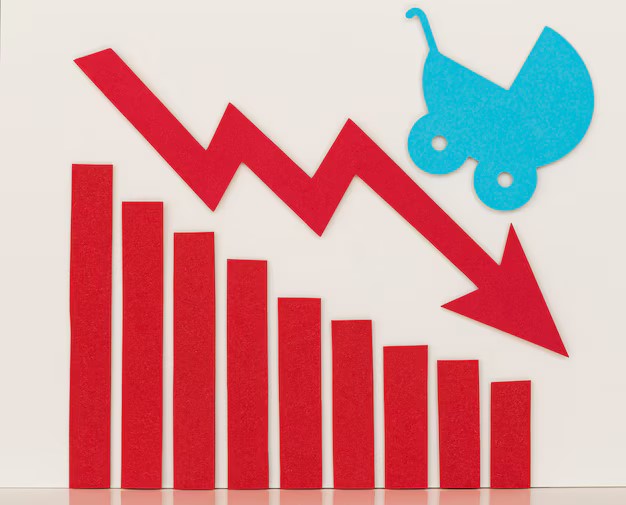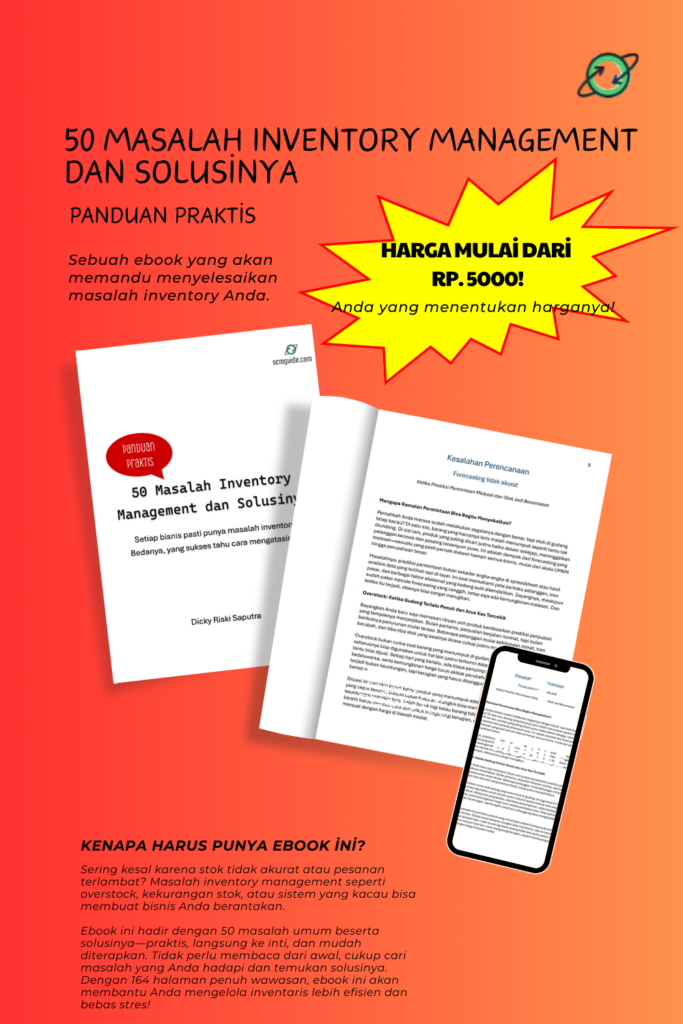Deflation is an economic phenomenon that can have a significant impact on various industries, especially supply chains. While lower prices for goods and services might sound like good news for consumers, deflation often indicates deeper economic problems. For businesses, particularly those in the supply chain sector, deflation presents challenges that can disrupt operations and stifle growth.
In this blog post, we’ll dive into what deflation is, how it affects the supply chain, and practical strategies you can apply to navigate this difficult situation.
Before we go further into this topic, don’t forget to follow my LinkedIn account. You’ll get more helpful insights on supply chain management there.
Table of Contents
What is Deflation and Why Does it Happen?
Deflation occurs when the overall price of goods and services in an economy drops. This means that your money’s purchasing power increases—you can buy more with the same amount of cash because prices are falling. Deflation is the opposite of inflation, where prices rise, and money loses its value.
Despite how it sounds, deflation isn’t necessarily a good thing. When prices fall, it often signals a drop in demand. Consumers and businesses hold off on spending, hoping that prices will fall even further. This slows down economic activity, leading to lower production, fewer jobs, and potential financial instability.
Several factors can cause deflation, including:
- Decreased demand: When people and businesses cut back on spending, either due to uncertainty or waiting for even lower prices.
- Overproduction: When companies produce too much, creating a surplus and forcing prices to drop.
- Falling costs: If raw material prices fall, the cost to produce goods also drops, which can push down prices.
- Monetary tightening: Central banks might restrict the supply of money, reducing overall spending and contributing to deflation.
In the supply chain, deflation can disrupt operations, causing issues at every stage from manufacturers to retailers.
The Impact of Deflation on the Supply Chain
When deflation occurs, it doesn’t just affect prices; it can create a chain reaction that impacts every aspect of supply chain operations. Here are some key effects to watch out for:
Drop in Demand
One of the clearest impacts of deflation is a decrease in demand. Both consumers and businesses might delay purchases, expecting prices to drop further. This can lead to a reduction in orders across all industries. If you’re managing a supply chain, this means fewer orders for your products, which reduces the need for production and slows distribution.

For instance, if a car manufacturer notices a drop in demand, it might slow production, leading to fewer orders for parts from its suppliers. This decline in demand ripples throughout the entire supply chain.
Excess Inventory
In normal circumstances, you plan production and inventory levels to match anticipated demand. However, deflation can create a sudden drop in demand, leaving you with more inventory than you need. Products pile up in warehouses, leading to higher storage costs and a risk that the goods may lose value over time.
If demand continues to decrease, holding too much inventory can drain your resources. You also risk having outdated products as trends change or newer models replace older ones.
You might also like:
- The Dual Nature of Automation in Supply Chain Management
- Top 10 Reasons Why ERP Systems Can Produce Incorrect Outputs
Reduced Profit Margins
Deflation forces companies to lower their prices to stay competitive. Unfortunately, while prices drop, the costs of producing, storing, and shipping goods may not fall as quickly. This squeeze on profit margins makes it difficult to maintain profitability. In severe cases, businesses might have to sell at a loss just to clear inventory.
For example, a retailer may cut prices to attract customers, but if the cost of rent, labor, and logistics remains high, the drop in revenue can lead to shrinking profits.
Tension with Suppliers
As businesses face reduced profits, they often renegotiate with suppliers to lower costs. While this might help you cut expenses in the short term, it can strain long-term supplier relationships. Suppliers facing the same economic pressures might struggle to maintain quality or even stay in business.
It’s crucial to handle negotiations carefully. Pushing too hard for lower prices can result in weaker partnerships, and suppliers may be less willing to collaborate when the economy rebounds.
Delayed Investments
In uncertain times, companies often hold back on making large investments, whether in new technology or expanding capacity. While it’s understandable to be cautious, delaying these investments can lead to missed opportunities for growth or improvements in efficiency.
In the long term, a lack of investment can leave your supply chain lagging behind, especially when competitors start to recover and innovate faster than you.
Strategies for Managing Deflation in the Supply Chain
While deflation presents significant challenges, there are strategies you can adopt to minimize its impact on your supply chain. Here are some steps you can take:
Optimize Your Inventory
Efficient inventory management is crucial in a deflationary environment. You need to be agile in adjusting your stock levels to reflect lower demand. A “Just-in-Time” (JIT) approach, which minimizes stock by ordering goods only as they’re needed, can help reduce storage costs and avoid overstocking.
By closely monitoring demand and adjusting your production and order schedules, you can reduce the risk of having excess inventory. This approach allows you to respond more quickly if the market recovers.
Diversify Your Markets and Products
If demand is falling in one area, it may be time to explore new markets or diversify your product offerings. Expanding into new geographic regions can help offset declining sales in others. Similarly, launching new products that meet emerging needs can give your business a competitive edge.
By diversifying both your markets and products, you reduce reliance on any single area and spread the risk more evenly.
Renegotiate with Suppliers
As prices drop, you’ll need to revisit your contracts with suppliers to ensure that you’re getting the best possible terms. However, be mindful of maintaining good relationships. Collaborate with suppliers to find mutually beneficial solutions rather than just pushing for lower prices.
Consider offering suppliers more flexible payment terms or long-term contracts in exchange for price reductions. This way, you both can weather the deflationary period without damaging the partnership.
Focus on Operational Efficiency
Deflation puts pressure on profit margins, so operational efficiency becomes more critical than ever. Look for ways to streamline processes, reduce waste, and improve productivity. Automation, data analytics, and better supply chain management tools can help you make your operations more cost-effective.

Evaluating your internal processes to eliminate inefficiencies, from production to distribution, will help you stay competitive even as prices fall.
You might also like:
- How to Navigate Global Shipping Delays: A Manufacturer’s Guide
- The Crucial Art of Job Allocation: Why It’s More Than Just a Numbers Game
Maintain High Standards of Quality and Service
Even in a deflationary market, customers still expect quality and excellent service. By focusing on delivering value beyond just price, you can retain customer loyalty. Offer exceptional service, build strong customer relationships, and maintain the quality of your products to differentiate yourself from competitors.
When customers see that they’re getting more value from you, they may be less likely to shop solely based on price, helping you maintain sales despite falling prices.
Manage Cash Flow Wisely
During deflation, your profit margins may shrink, making it essential to manage your cash flow carefully. You need to ensure that your business has enough liquidity to cover operational expenses. Focus on cutting unnecessary costs, optimizing payment terms, and keeping cash reserves.
Ensure that you maintain a healthy cash flow by shortening the payment cycle from customers and negotiating extended payment terms with suppliers where possible. Having a strong cash position will give you the flexibility to adapt to changing conditions.
Collaborate Across the Supply Chain
In tough economic times, collaboration with your suppliers, partners, and customers is key. By sharing market insights, forecasting data, and best practices, you can better anticipate changes and adjust your strategies. Collaborative planning helps ensure that everyone in the supply chain is aligned and prepared for fluctuations in demand or pricing.
Stronger collaboration fosters transparency and trust, allowing you to navigate economic challenges as a united front.
Conclusion
Deflation can create a complex set of challenges for the supply chain, from reduced demand and excess inventory to shrinking profit margins and strained supplier relationships. However, with proactive strategies, you can mitigate the impact of deflation on your business.
By optimizing your inventory, diversifying your markets and products, focusing on efficiency, and maintaining strong relationships with suppliers and customers, you can stay resilient in the face of deflation. The key is to be flexible and responsive, ready to adjust your operations as the economic situation evolves.
While deflation may be a difficult economic reality, it also presents opportunities to rethink your supply chain strategies, streamline operations, and build stronger, more collaborative relationships that will serve you well in the long term. With the right approach, you can turn deflation into a chance to sharpen your competitive edge and position your business for success.
I hope you find it helpful!
Please share this article with your colleagues so they can also benefit. For more insights on supply chain management, follow my LinkedIn account. You’re free to use all articles on this blog for any purpose, even for commercial use, without needing to give credit.

 by
by 



